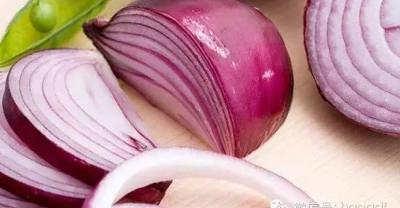Vegetables with the most pesticide residues: the top five poisonous vegetables on the Internet, but you eat them every day?
Poisoned rice, poisoned milk powder
Gutter oil, Sudan red
These nouns must be familiar to everyone.
Although I may not have eaten it, the name of "danger" is like thunder.
I heard that there has been another "poisoned vegetable" recently.
What's it all about?

Vegetables have always been a must for fitness professionals, but recently, a TV station listed the "five poisonous king vegetables" in a program, all of which were the most common vegetables, which aroused heated discussion among experts and panicked some viewers.

So are these "poisonous vegetables" really poisonous? Where does their "poison" come from? Breakfast brother will show you how to distinguish "poisonous vegetables".
Is the list of "most poisonous" vegetables credible?
No.5 tomato

The tomatoes recommended by nutritious people, slimming people and whitening people unexpectedly ranked fifth on the list? In fact, the "poison" here refers to plant hormones.
The natural growth cycle of tomatoes usually takes 4 to 6 months, but at present, many of the tomatoes on the market are grown in greenhouses and have been baptized by fruit farmers. And this "red and ripe" uses plant hormones!
NO.4 Chinese cabbage

The "poison" of tomatoes is due to "plant hormones", while the "poison" of cabbage is pesticide residues. The program points out that Chinese cabbage needs to be injected with two pesticides during the growth cycle, one on the root to prevent maggots from biting off the root, and the other on the leaves to prevent normal insect pests, so the inner and outer layers are prone to pesticide residues.
NO.3 cauliflower

In order to prevent delicate cauliflower from bumping and injuring during transportation, farmers will wrap a paper film on cauliflower, which makes the pesticides on cauliflower unable to volatilize; in addition, the uneven surface of cauliflower is also a major factor in pesticide residues.
NO.2 cucumber

When you buy cucumbers, do you like to buy cucumbers with buds on the top? If so, and bought it, then you probably bought a "hormone cucumber".
According to the media, many cucumbers with delicate yellow flowers on their heads are smeared with estrogen, so that the yellow flowers can be maintained for a long time and make the cucumbers look fresh. And this "estrogen" is the "poison source" of cucumbers.
NO.1 asparagus
The program explained that because asparagus grows in the hot summer, there are many insect pests and need to be constantly treated with pesticides, and because of its special growth cycle, the fresh and tender leaves above are constantly picked, while pesticides continue to accumulate in the roots. as a result, the pesticide residue of asparagus is the highest.
So, must the information disclosed in the program be true and credible? Are these so-called "poisonous vegetables" really "so poisonous that they can't be eaten"?
The hormone is not harmful, and the presence of agricultural residues does not mean exceeding the standard.
First of all, the plant hormones that can accelerate the ripening and preservation of tomatoes and cucumbers, which are also called plant growth regulators, are used to regulate the growth and development of plants and will not cause much harm to the human body.
Besides, this pesticide residue. According to the analysis of relevant experts, the agricultural residues mentioned by the dietitian in the program do not have actual agricultural residue test results, nor do they exceed the national standards, so as long as you master the following "detoxification methods", you can have peace of mind to eat!
There are some wonderful ways to reduce pesticide residues in vegetables.
Cleaning with rice washing water to reduce pesticide residues
The alkalinity of rice washing water will be enhanced after fermentation, which can reduce harmful substances in vegetables. In addition, Amoy rice water itself has a certain viscosity, which can adsorb some pesticides attached to the food surface.
Removal of formaldehyde and Pesticide residues with Light Salt Water
Compared with fresh water, light salt water has germicidal efficacy, and the solubility of light salt water to formaldehyde is larger. Soak in brine for 3-5 minutes, then rinse with clean water.
Scrub vegetables for more than 30 seconds
Repeated washing of clear water is the easiest and quickest way to remove agricultural residues. Vegetables can be soaked in clean water for 10 minutes and then scrubbed. The time is not too long, especially when the temperature is high in summer, it is easy to breed microbes for a long time.
Degradation of pesticide residues after heating
At present, pesticides used in fruits and vegetables are not resistant to high temperature, so some pesticides can be volatilized and decomposed after heating. For some vegetables that are more difficult to clean, such as cauliflower, blanching with hot water can effectively remove pesticide residues, while for vegetables with relatively smooth and easy skin, such as potatoes and tomatoes, there is no need to take this method.
If you want to stay away from "poisoned vegetables"
It is suggested to choose "seasonal vegetables" as much as possible.
Use four more tricks to detoxify.
Pesticides and hormones are no longer afraid!
- Prev

Several vegetables that must be eaten by patients with liver cirrhosis are of great benefit to the relief of liver cirrhosis!
Click on the upper right corner to pay attention immediately, more health content will no longer be missed, occasional surprises will be given to you for patients with liver cirrhosis, we must pay attention to a reasonable diet.
- Next

Does okra have the function of tonifying kidney and strengthening yang?
Zhengfang: it is said that he has the function of tonifying the kidney and strengthening yang, which was nicknamed Huang Jinjia at that time! The bullwhip of the plant world! The man ate very well! Someone left a message on the Internet: how to say.
Related
- Where is it suitable to grow horseradish in China? it is expected to see the middle altitude horseradish in Alishan.
- How to prevent tomato virus disease reasonably? (Control methods included)
- Many people like to plant towel gourd on the balcony. What are the main points of this method and management?
- What crops can chili peppers be mixed with?
- Fertilization techniques and matters needing attention in Tomato
- What are the grafting techniques for peach seedlings in spring?
- Harm and control methods of root swelling disease of Chinese cabbage
- What are the pests of sweet potatoes? How to prevent and cure it?
- Symptoms, causes and Control methods of navel Rot in Tomato
- The cause of "Cucumber rotten bibcock" in Farmers' planting Cucumber and its Control Plan

